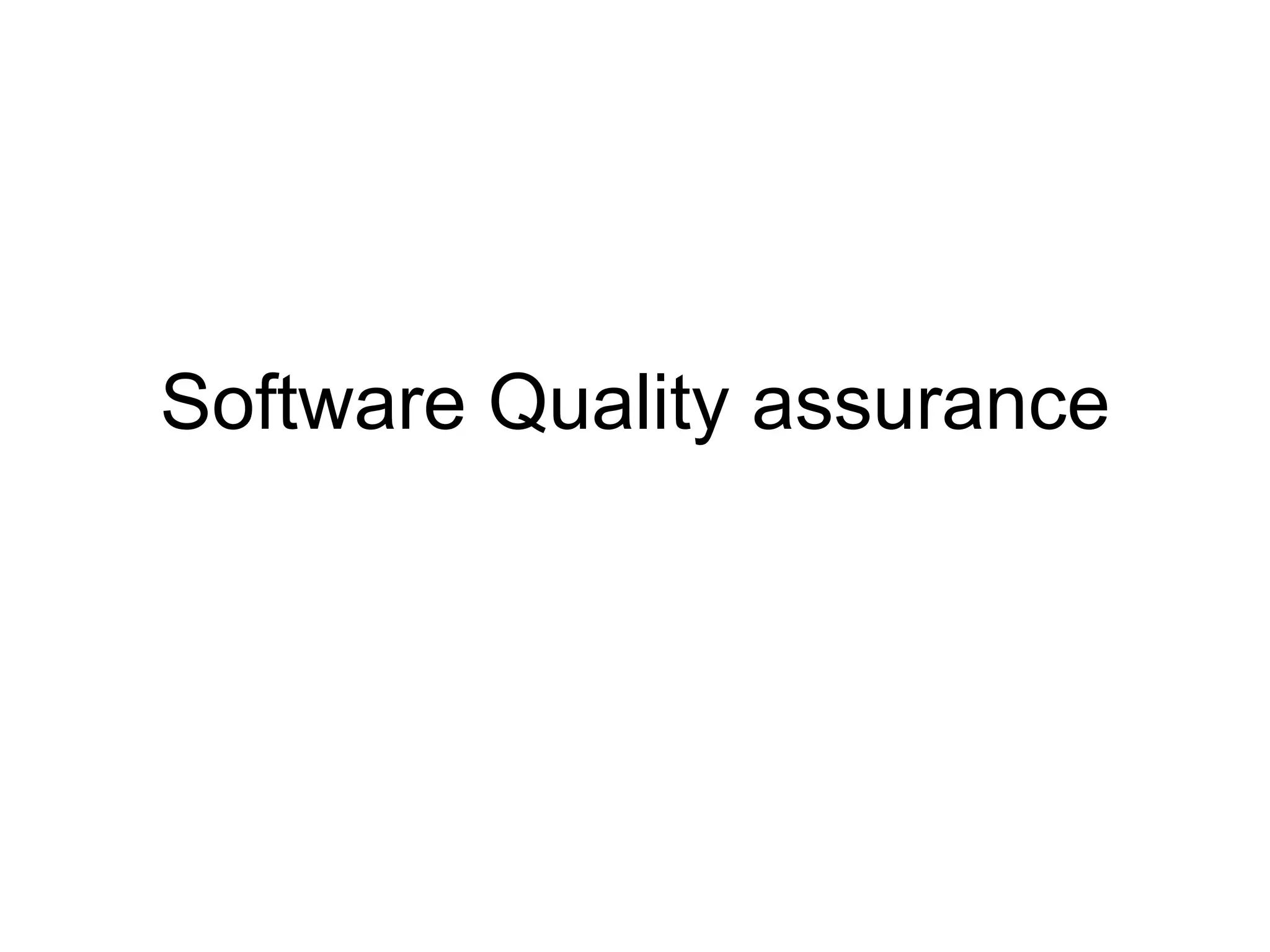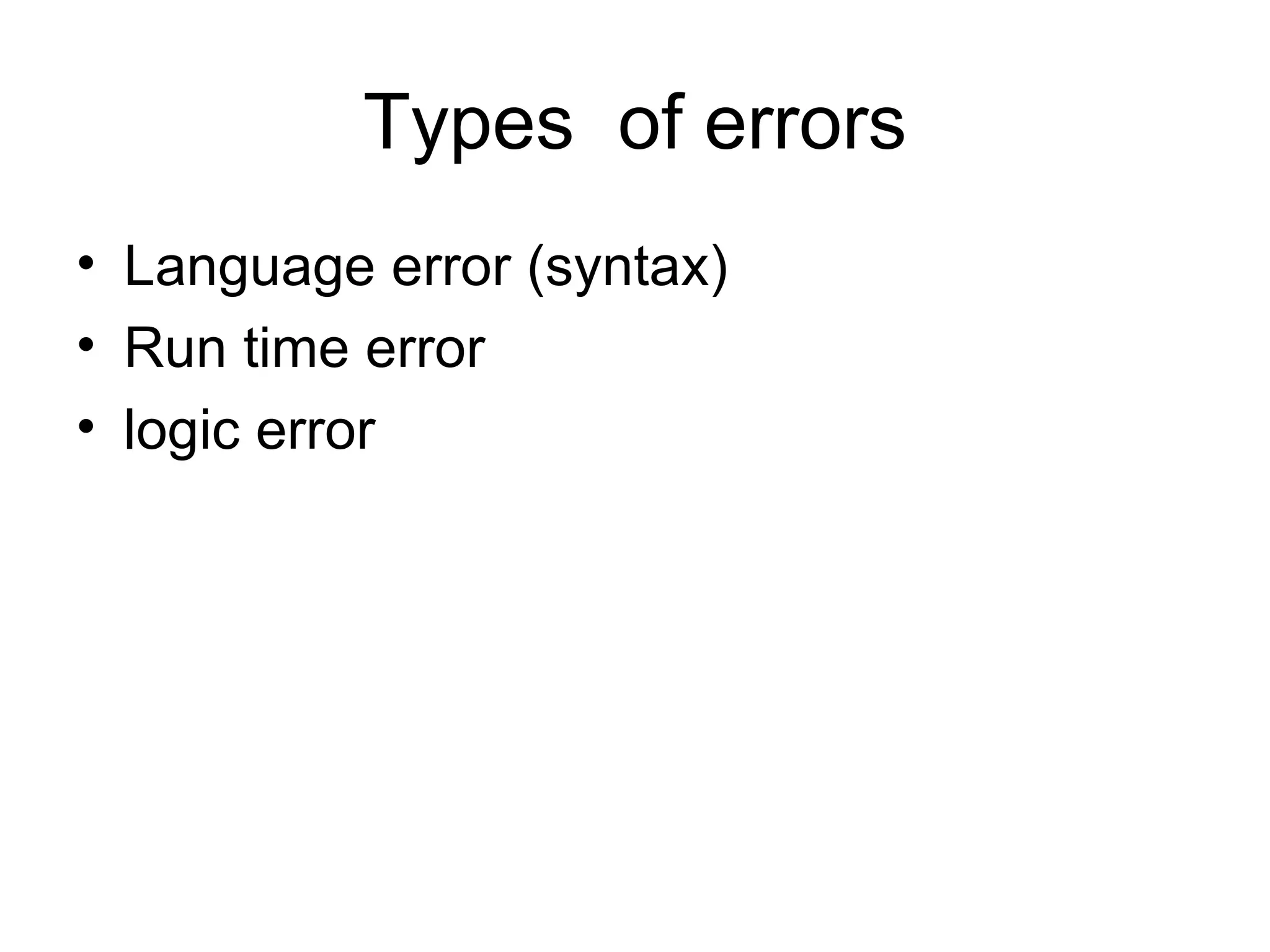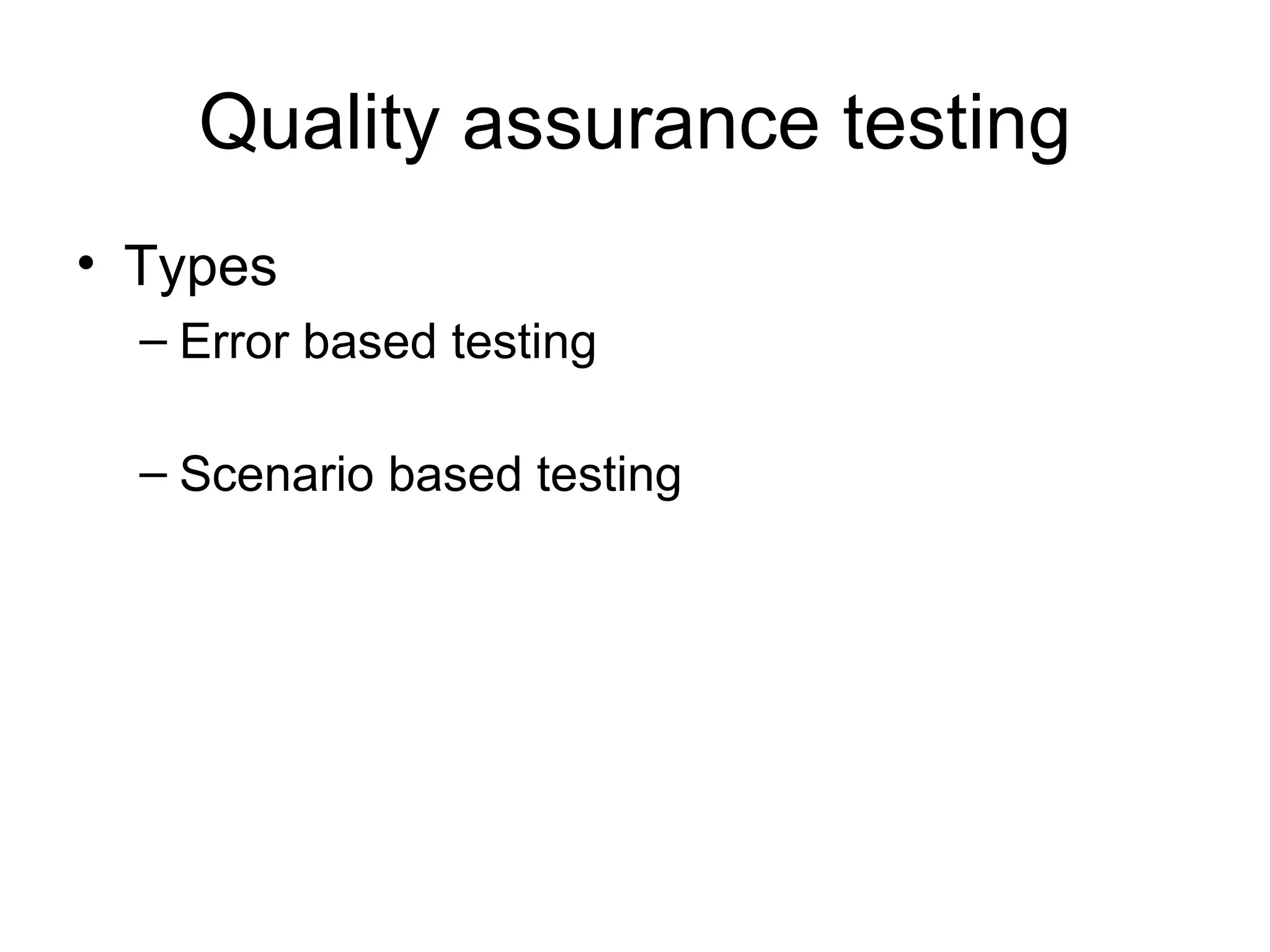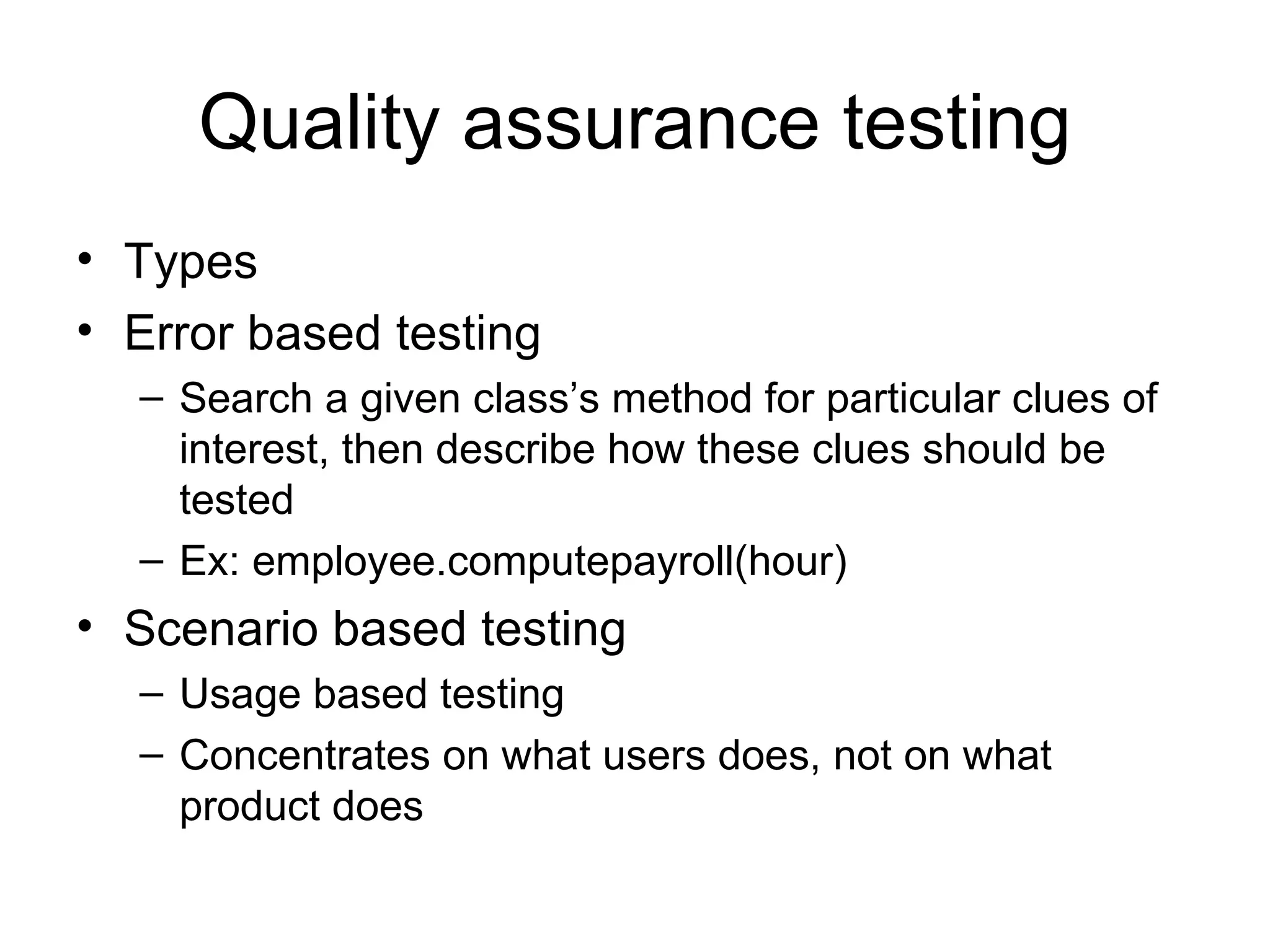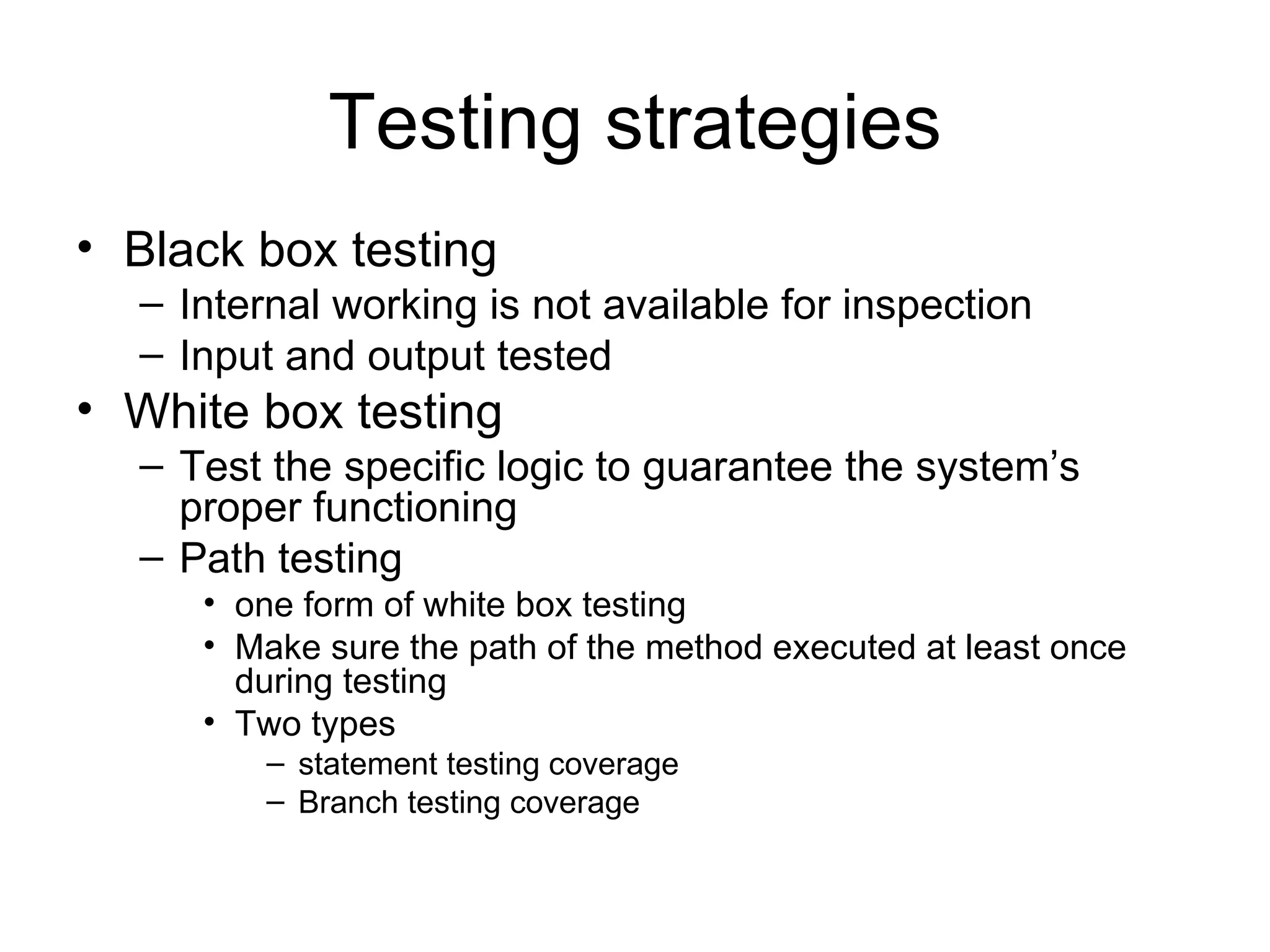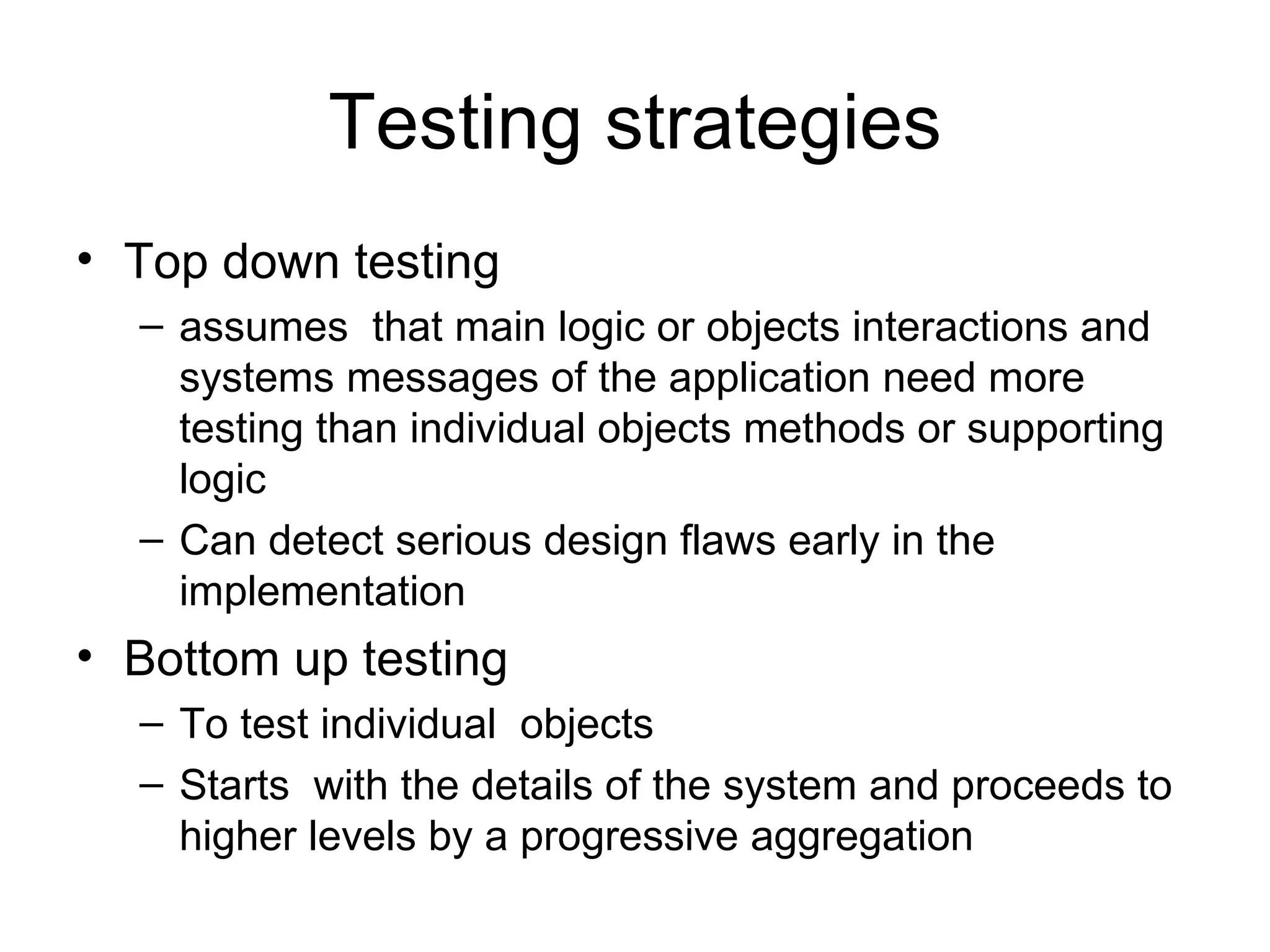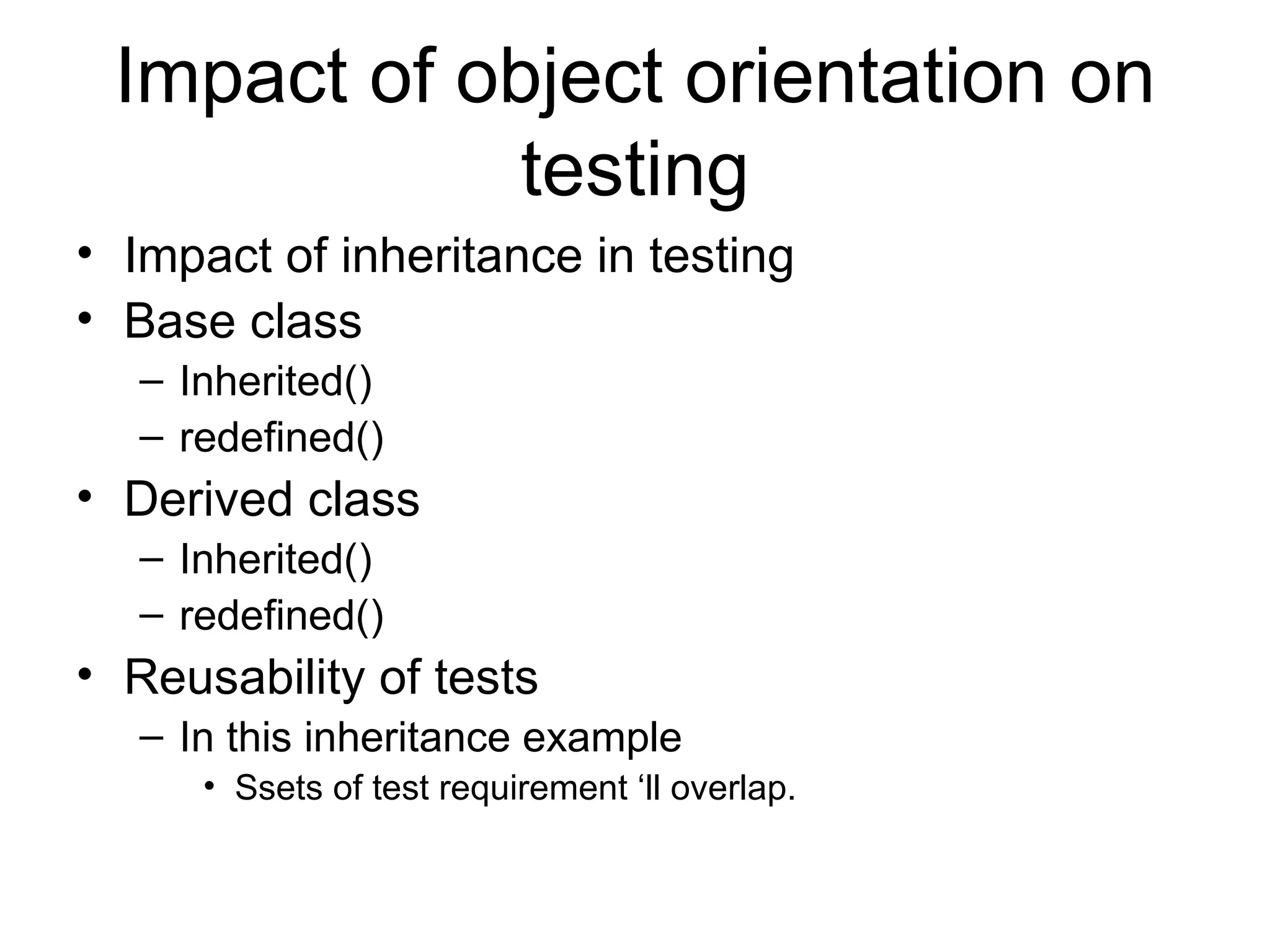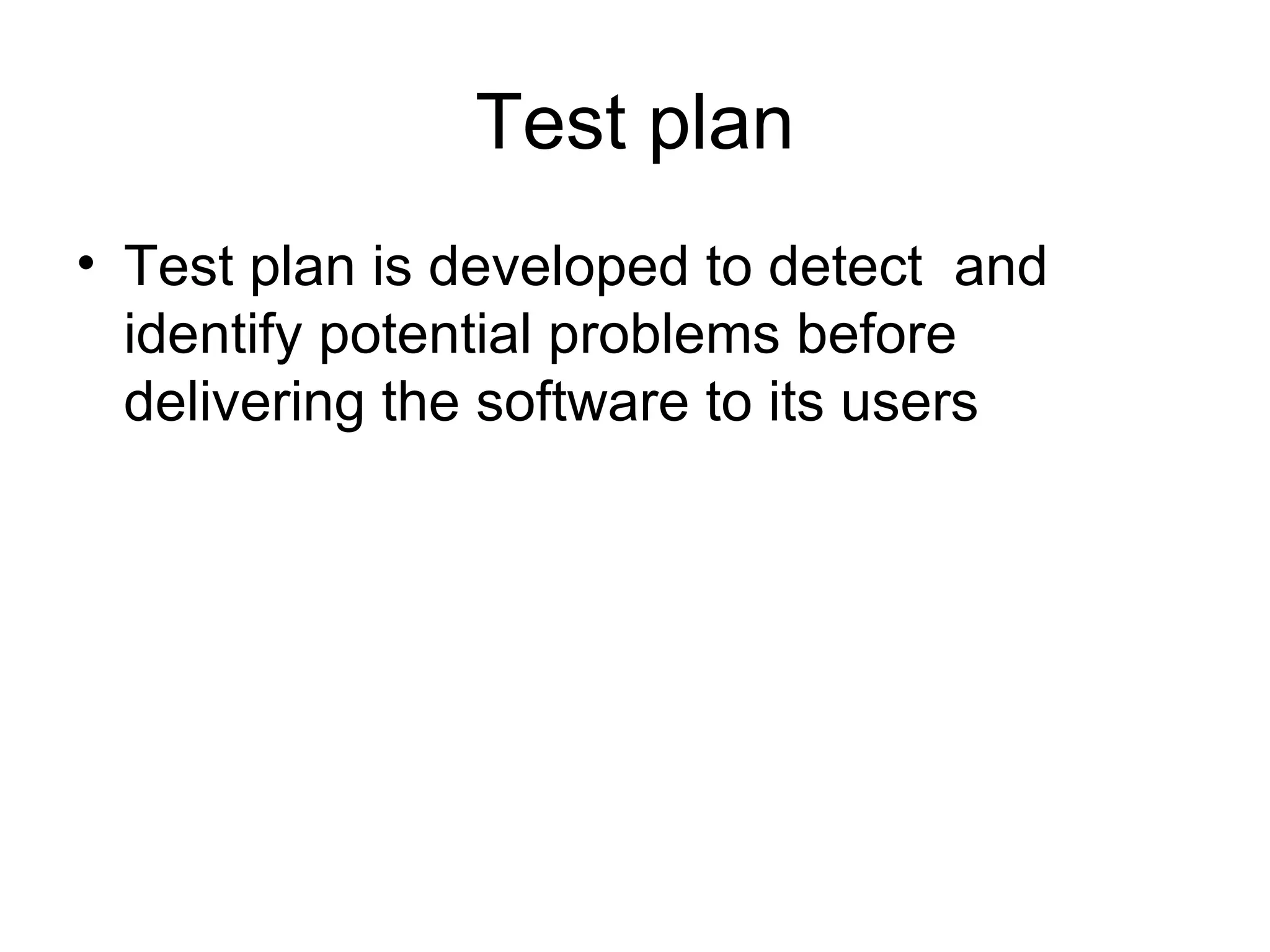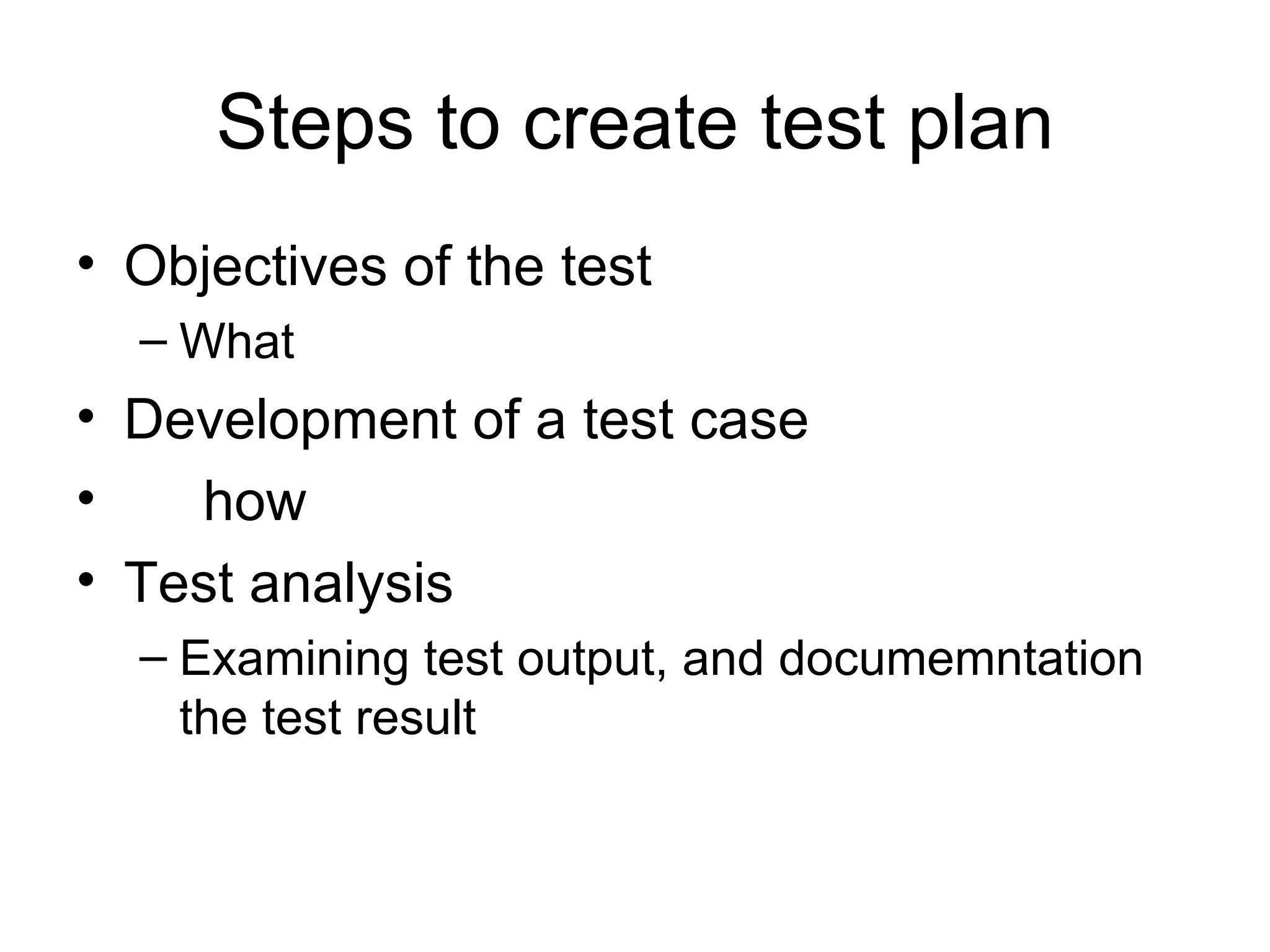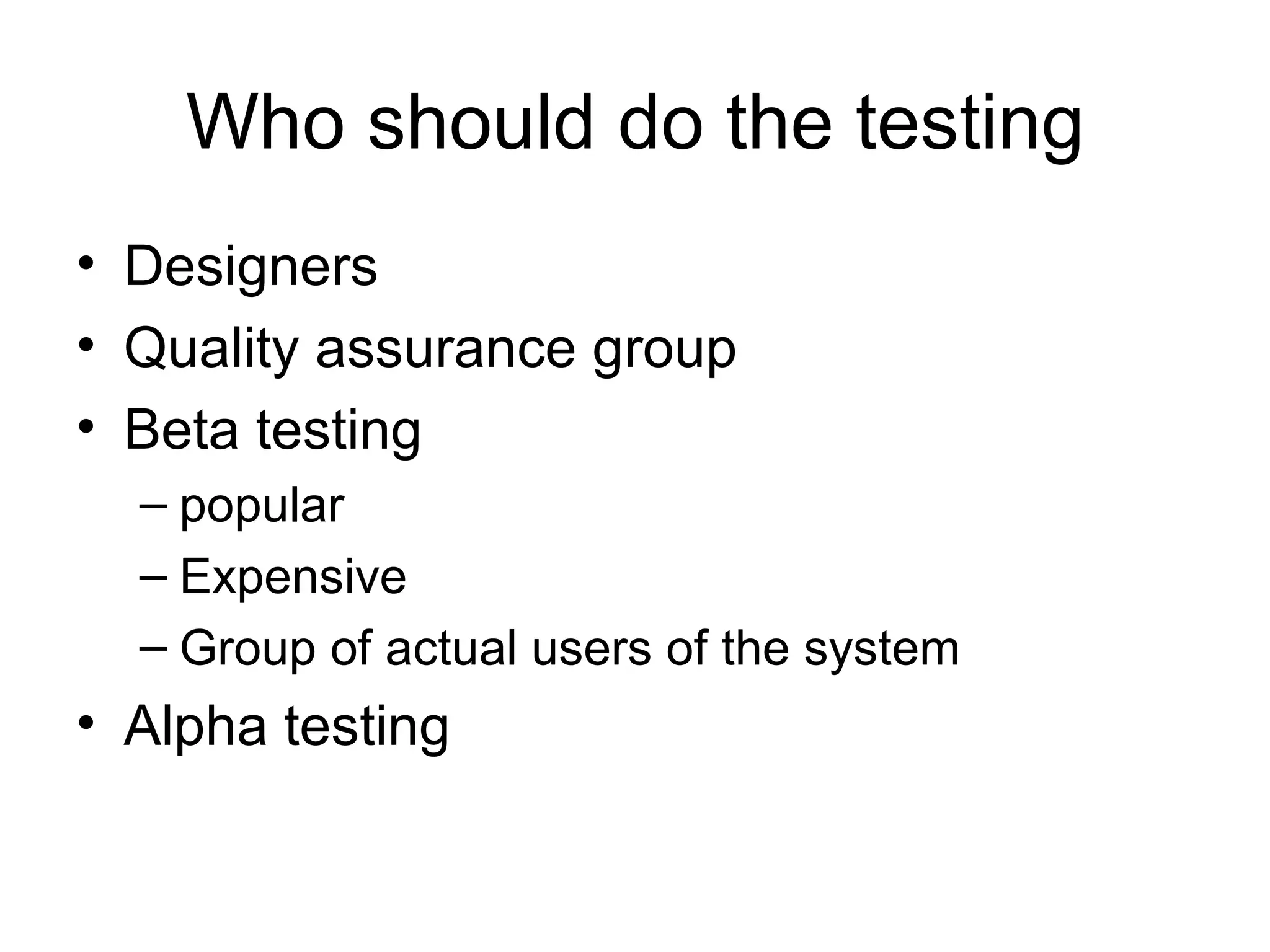This document discusses software quality assurance testing. It covers different types of errors, quality assurance testing types like error-based and scenario-based testing, testing strategies like black box and white box testing, the impact of object orientation on testing, and steps to create a test plan including objectives, test cases, analysis, and who should do the testing.
